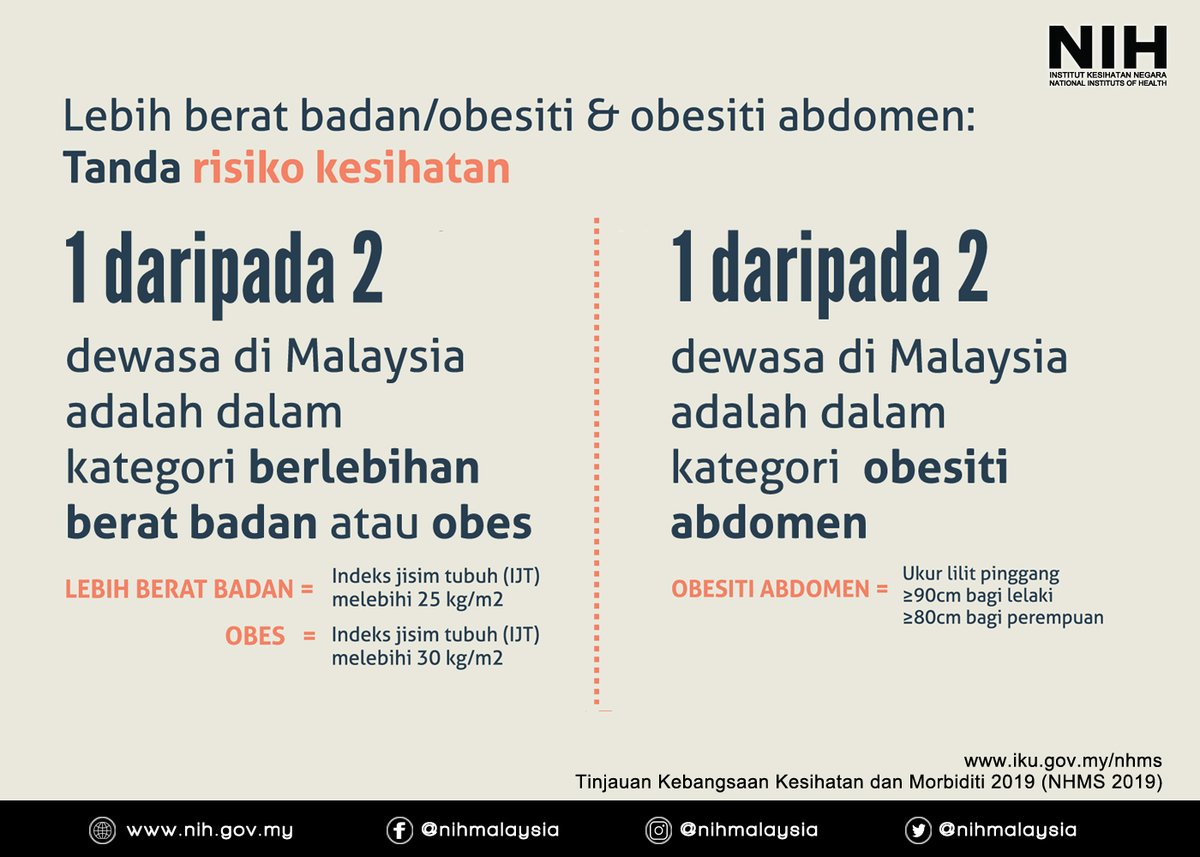The Ministry of Health Malaysia (MOH) in a statement on Twitter said that a large number of COVID-19 deaths were linked to non-communicable comorbidities diseases including obesity.
Based on a study from the National Institutes of Health, it is informed that when a person is overweight and abdominal obesity, it is a sign of health risk.
What is the difference between overweight or obesity and abdominal obesity?
To identify a person who is obese, they need to calculate body mass or more with Body Mass Index (BMI). In a study conducted by the MOH, 1 in 2 adults in Malaysia are overweight and obese.

Also, one can identify them as abdominal obesity by calculating waist circumference. For obese men, waist circumference is over 90 cm while for obese women it is over 80 cm. The study found that 1 in 2 adults in Malaysia is in the category of abdominal obesity.
As a precautionary measure, MOH advised the public in addition to adopting the 3S and 3W concepts, to break the COVID-19 chain. People are also reminded to stay active and practice a healthy diet.
Sebilangan besar kematian #COVID19 dikaitkan dengan komorbiditi penyakit tidak berjangkit, termasuk #obesiti.
Selain mengamalkan langkah pencegahan (3S & 3W) untuk memutuskan rantaian #COVID19, teruskan kekal aktif dan amalkan pemakanan sihat. pic.twitter.com/jSqlbhoPEX
— KKMalaysia🇲🇾🩺❤️ (@KKMPutrajaya) November 1, 2020
Source: Ministry of Health Malaysia









Leave a Comment